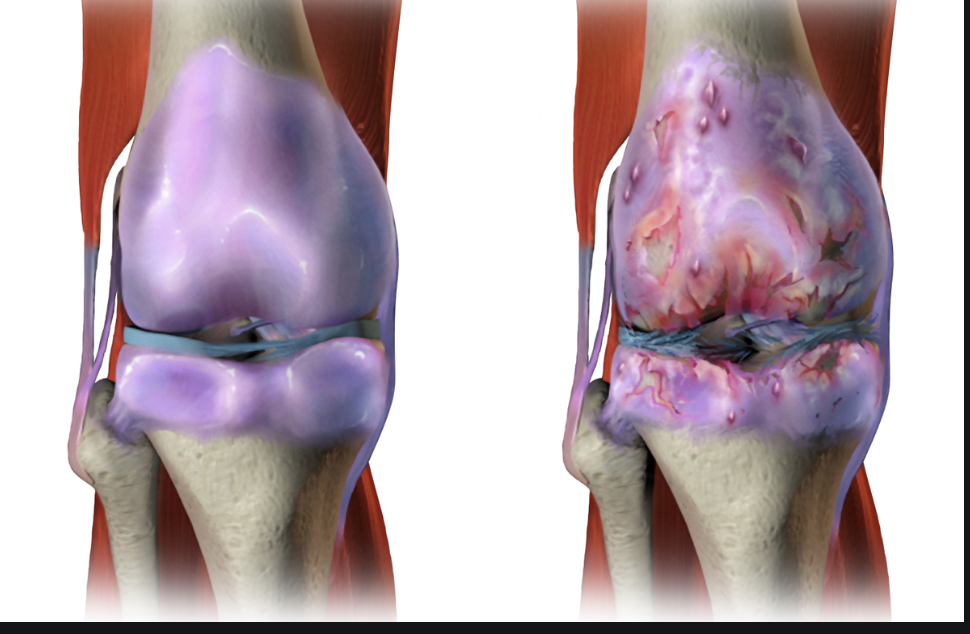
A normal knee on the left shows no signs of disease; the one on the right shows advanced Osteoarthritis.
New MRI Scanning Tool Can Read Subtle Patterns Humans Miss
An artificial intelligence algorithm can detect subtle signs of osteoarthritis in MRI scans, years before symptoms of the condition even begin.
Researchers at the University of Pittsburgh School of Medicine and Carnegie Mellon University College of Engineering say the primary treatment for osteoarthritis is joint replacement. The condition is so prevalent that knee replacement is the most common surgery in the U.S. for people over the age of 45. Early identification of arthritis could lead to other treatments.
AI has continually created improvements in the medical field, such as algorithms that are better at reading MRIs of heart patients, as well as cat scans and x-rays. Now it’s gleaning insights from MRI bone scans.
“The gold standard for diagnosing arthritis is x-ray. As the cartilage deteriorates, the space between the bones decreases,” said study co-author Kenneth Urish, MD, PhD, associate professor of orthopaedic surgery at Pitt and associate medical director of the bone and joint center at UPMC Magee-Womens Hospital. “The problem is, when you see arthritis on x-rays, the damage has already been done. It’s much easier to prevent cartilage from falling apart than trying to get it to grow again.”
The team used this dataset to train an AI algorithm to learn subtle patterns on MRIs and determine which patients would go on to develop osteoarthritis and which wouldn’t. Researchers tested the model on MRIs of patients it had never seen before. The team repeated the process dozens of times, withholding different participants each time in order to test the algorithm on all the data.
The results showed that overall, the algorithm predicted osteoarthritis with 78 percent accuracy from MRIs performed three years before symptom onset.
The 78% rate may not be a good enough number to avoid surgery or to begin a new knee regimen, but it does offer hope for the near future when the percentage is bound to go up substantially.
As patients expect more from treatment, and the volume of available data continues to increase, AI may be the engine that drives improvements in healthcare. With early warning, for instance, patients could be treated with preventative drugs rather than undergoing joint replacement surgery.
“Instead of recruiting 10,000 people and following them for ten years, we can just enroll 50 people who we know are going to be getting osteoarthritis in two or five years,” Urish said. “Then we can give them the experimental drug and see whether it stops the disease from developing.”
Learning algorithms can become more precise and accurate as they interact with training data, allowing humans to gain unprecedented insights into diagnostics, care processes, treatment variability and lead to better patient outcomes.
read more at healthitanalytics.com







Leave A Comment